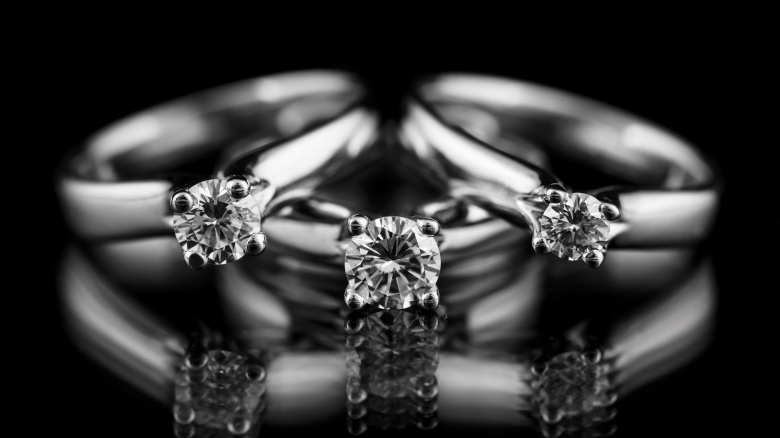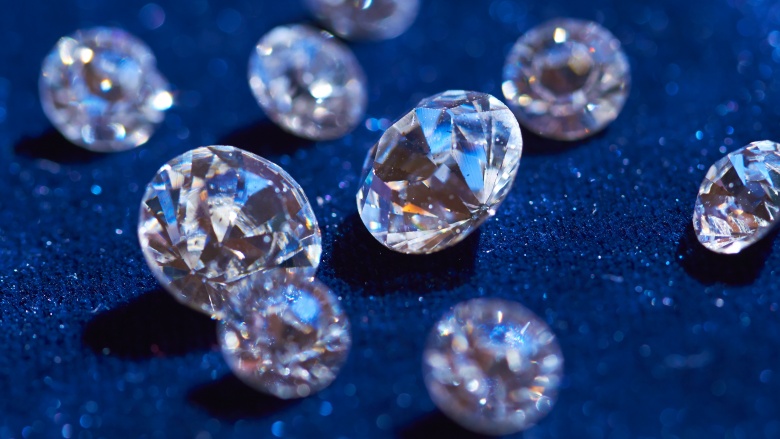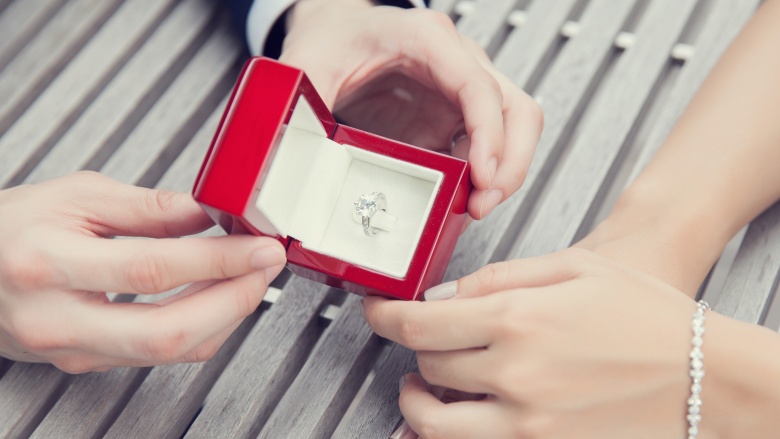The Untold Truth Of Your Engagement Ring
Long before girlfriends everywhere were adding photos of sparkly engagement rings to their secret boards on Pinterest, it was the famous "A Diamond Is Forever" ad campaign that had single ladies everywhere fantasizing about the day their man would get down on one knee with a giant rock to prove his love.
By now, most of us are acutely aware that the whole diamond engagement thing is a total scam (I mean, when else has three months' salary ever been the benchmark for what a piece of jewelry should cost?). But we go along with it anyway. Why? Well, because it's all so shiny and romantic. Plus, it's a tradition now, regardless of how it started. Uh, right? Perhaps.
Nevertheless, there are plenty of people who argue that just because something is a social norm doesn't mean we should all do it. On an episode of truTV's Adam Ruins Everything, comedian Adam Conover attempted to burst our engagement ring bubbles once and for all by giving us the lowdown on exactly why the "a diamond is forever" idea is a big pile of BS.
If you're ready for the truth about diamond engagement rings, it's about to get real up in here.
A tradition that's not so "ancient"
While diamonds have appeared in jewelry as far back as the 13th century, the tradition of diamond engagement rings is far newer. Before the 19th century, diamonds were reserved for royalty and only worn at night. It was actually considered vulgar to wear a diamond during the day. It wasn't until the late 1930s, thanks to a little company named De Beers, that the idea of a diamond engagement ring started being pushed to the mass market. In fact, come to think of it, my own grandmother sports a single yellow gold band, which is the only wedding ring she's had since she and my grandfather got married in the 1940s.
The magic of marketing
It's no secret that great marketing is the key to major social change. Powerful marketing strategies win elections, spark movements, and create trends in popular culture.
But before the marketing geniuses of Apple, Google, Amazon, or even Oprah, diamond mogul De Beers created one of the most successful marketing campaigns in modern American history. Enter "A Diamond Is Forever."
In the 1940s, Philadelphia ad agency N.W. Ayer was tasked with boosting diamond sales, which had been on the decline during the Great Depression. The challenge fell largely on Frances Gerety, the only female copywriter at the firm, who was ordered to "create a situation where almost every person pledging marriage feels compelled to acquire a diamond engagement ring."
De Beers' 2016 sales were just over $3 billion in April of the year, up 18 percent from the year prior. We'd say Ms. Gerety did a pretty effective job all those years ago, wouldn't you?
Diamonds aren't as rare as you think
Creating a psychological need for diamonds was just part of a much bigger marketing strategy that made De Beers so successful. The diamond conglomerate got into consumers' heads with the idea that diamonds were a rare and precious stone, which wasn't entirely true.
Diamonds may be the hardest material found on Earth, but they're certainly not the rarest. In fact, of all gemstones, diamonds are actually the most common, according to the International Gem Society. But, because DeBeers set up the first large-scale diamond mines in South Africa and managed to gain control of the supply as diamonds appeared in other parts of Africa and South America, it wasn't easy to buy diamonds from another company. This allowed DeBeers to regulate diamond prices, and play them up as a "rarity." Sneaky, sneaky.
A pretty bad investment
If you've ever tried to sell a diamond, then you probably already know that these babies decrease in value by about 50 percent as soon as you walk out of a jewelry store. Yikes, and we thought the depreciation on cars was bad.
Jack Brod, president of Empire Diamonds, told The Atlantic, "We usually can't pay more than a maximum of 90 percent of the current wholesale price. In most cases we have to pay less, since the setting has to be discarded, and we have to leave a margin for error in our evaluation." For example, Brod estimated that a half-carat diamond ring, which might cost $2,000 at a retail jewelry store, could be sold for only $600 at Empire.




